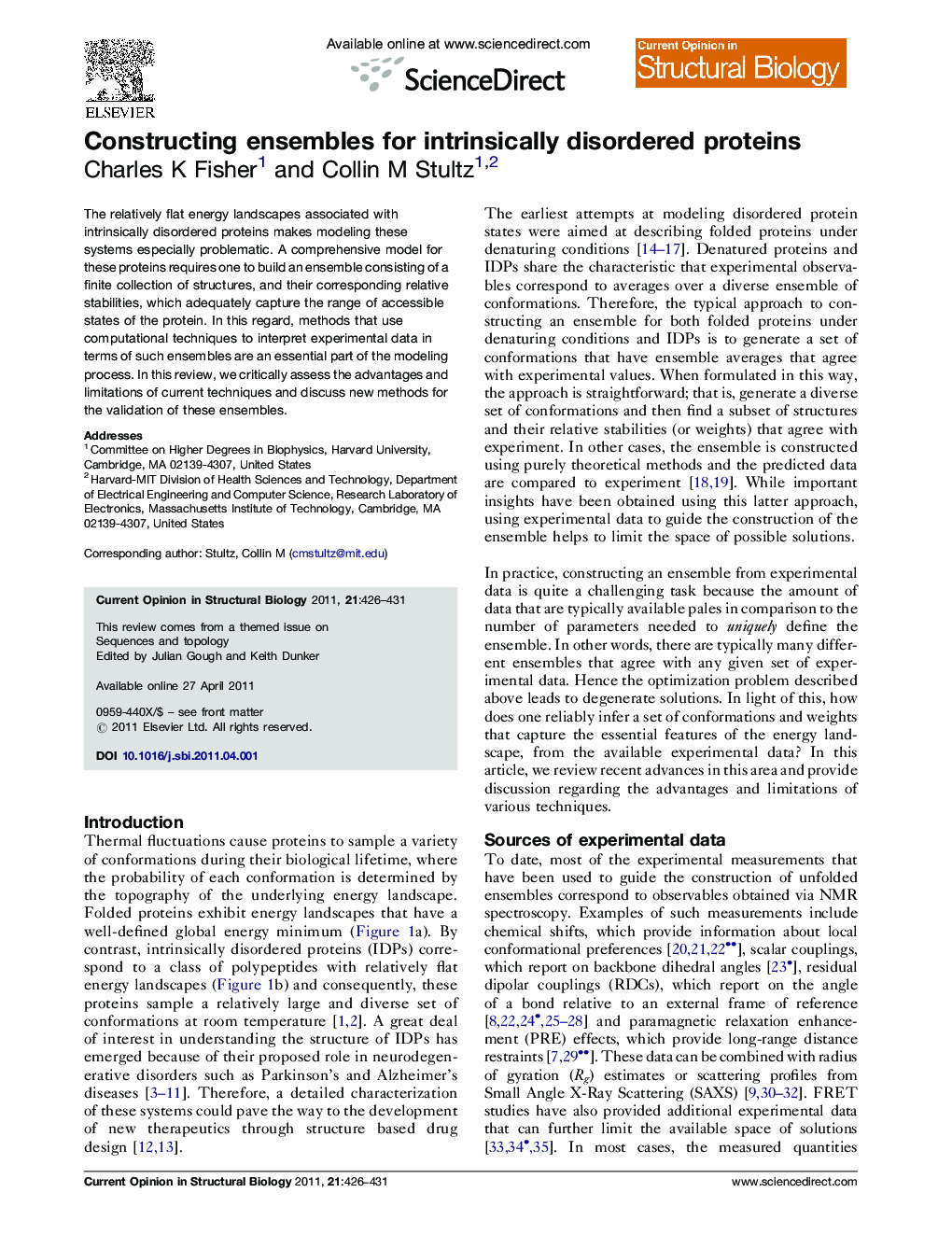| Article ID | Journal | Published Year | Pages | File Type |
|---|---|---|---|---|
| 1979162 | Current Opinion in Structural Biology | 2011 | 6 Pages |
The relatively flat energy landscapes associated with intrinsically disordered proteins makes modeling these systems especially problematic. A comprehensive model for these proteins requires one to build an ensemble consisting of a finite collection of structures, and their corresponding relative stabilities, which adequately capture the range of accessible states of the protein. In this regard, methods that use computational techniques to interpret experimental data in terms of such ensembles are an essential part of the modeling process. In this review, we critically assess the advantages and limitations of current techniques and discuss new methods for the validation of these ensembles.
► We critically discuss methods for modeling intrinsically disordered proteins. ► Both the advantages and limitations of existing methods are analyzed. ► We further outline the major challenges to modeling these proteins and discuss new methods for the validation of these approaches.
